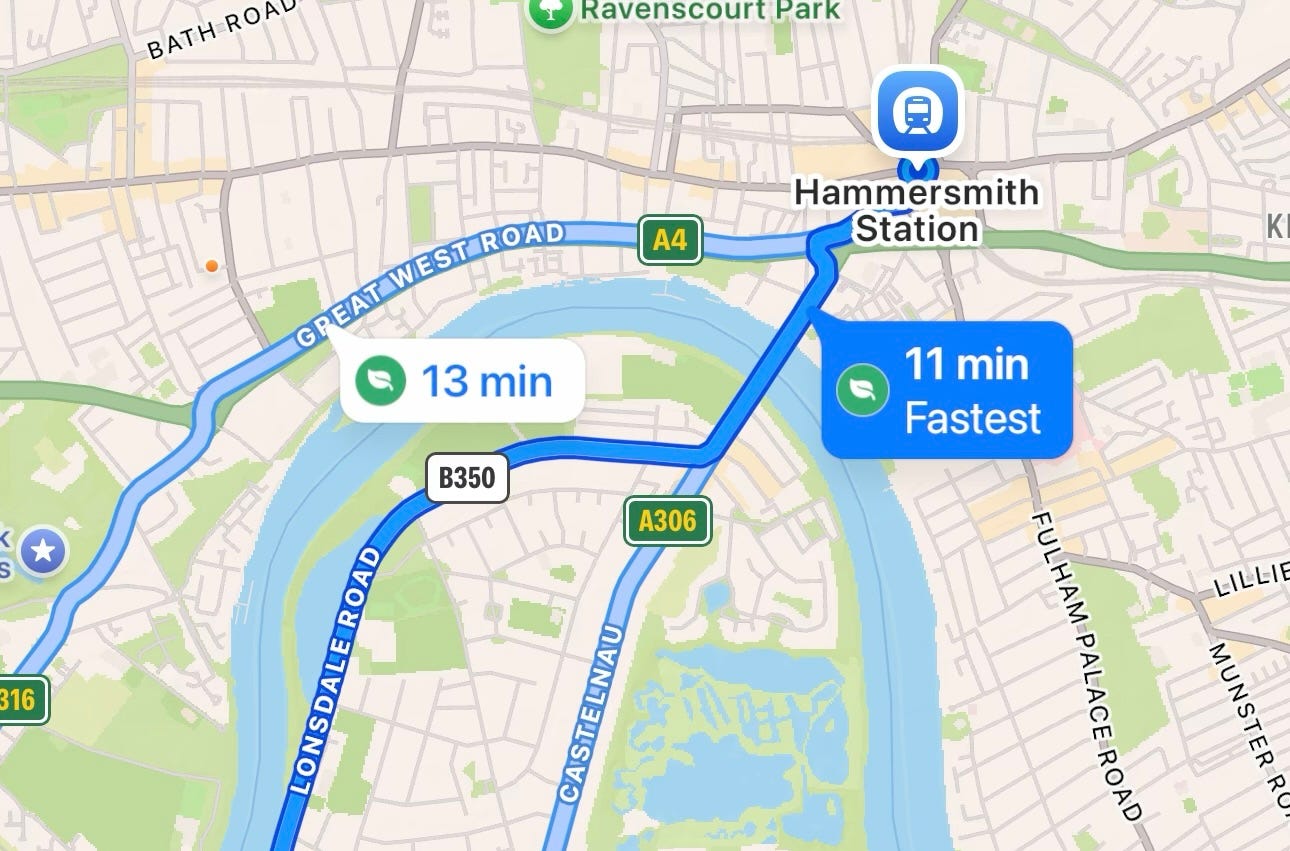Hammersmith Bridge open for cars ..
.. acording to Apple Maps - story 97
I smiled the first time I read the WhatsApp message late on Thursday 03 July. Apple was ‘Thinking Different’ again.
According to Apple Maps, the quickest way by car from White Hart Lane to Hammersmith Station was… across Hammersmith Bridge.
Then I saw the follow-up message.
A lot of frustrated drivers reacted to a closed bridge by driving down Riverside Gardens, the wrong way.
Not so funny now.
Notes & thoughts
I rarely drive the car within London. Its main use now is for longer trips to see family in the Midlands and the North. Navigation apps come in to their own. I write that as a cartophile.
I am familiar with their weaknesses though. Waze-suggested cut throughs on country lanes which become all country and no lane. Or suggesting a time-saving routes through an industrial estate that is blocked by a (new) factory.
The question now is how quickly these driving aids can be corrected? In this case, a fix was in place by early morning.
That feels too slow. Internet time, again.
The cost of these digital errors isn’t paid by the tech companies. It’s paid by the local resident who gets sworn at while trying to redirect a confused driver. That happened here on Thursday night.
The Bridge has been closed to vehicles since 2019. Yet something, a faulty signal or pattern of movement, was apparently enough to trigger Apple Maps into re-opening it, virtually. Perhaps it was the hundreds of Apple Watches and iPhones crossing the Bridge every day, mostly on wrists or handlebars, moving at 10 to 15mph. Was that enough to convince the algorithm the route was viable for traffic?
Waze would likely have caught the error more quickly. Its model is built on engaged users flagging issues in real time. Google and Apple are more opaque, slower to react. And here, Apple’s mistake put people at risk.
I don’t understand how the apps work in this country so am loathe to comment further. More when I have it.


